#Opal tometi
Explore tagged Tumblr posts
Text
By: Michael Huemer / Free Black Thought
Published: Oct 14, 2024
Editors’ note: This is an excerpt from Michael Huemer’s new book, Progressive Myths.
The Myth
Many unarmed black people are shot by American police every year. Blacks are regularly killed by police due to racism.
Examples of the Myth
It is hard to find published sources that directly state the first part of the myth, concerning unarmed black men, though there are many sources that devote extensive attention to police shootings of unarmed black men while ignoring victims from other races.
In 2021, Skeptic magazine published survey results indicating people’s answers to the following questions:
Q1: “If you had to guess, how many unarmed Black men were killed by police in 2019?” (Available answers: About 10, about 100, about 1000, about 10,000, more than 10,000.)
Q2: “If you had to guess, in 2019 what percentage of people killed by police were Black?” (Respondents could choose any number from 0 to 100.)
In answer to Q1, 29% of people answered “about 1,000” or more (1,000: 19%; 10,000: 6%; over 10,000: 4%). In answer to Q2, the average estimate was 48%. (See further here.)
This doesn’t tell the whole story, though. The answers differed greatly by political orientation. Respondents who self-identified as “liberal” or “very liberal” were much less accurate than moderates or conservatives. Among liberal or very liberal respondents, nearly half (46%) thought that the number of unarmed black men killed by police was about 1,000 or more. This same group on average estimated that 58% of people killed by police were black.
Misconceptions were correlated with trust in the media—people who reported greater trust in the media were more misinformed about police shootings. This may be because media sources give misleading impressions about this particular issue. Alternately, it may be because “racist police shootings are a huge problem” and “the mainstream media are trustworthy” both have independent appeal to liberals.
Concerning the second part of the myth, that police killings show racial bias: The main argument for this is that a higher percentage of the people killed by the police are black than the percentage of the general population who are black:
Police disproportionately shoot and kill black Americans … black Americans were twice as likely to be shot and killed by police officers, compared with their representation in the population. —ABC News
Black people, who account for 13 percent of the U.S. population, accounted for 27 percent of those fatally shot and killed by police in 2021…. That means Black people are twice as likely as white people to be shot and killed by police officers. —NBC News
In 2013, three radical Black organizers—Alicia Garza, Patrisse Cullors, and Opal Tometi—created a Black-centered political-movement-building project called #BlackLivesMatter in response to the acquittal of Trayvon Martin’s murderer, George Zimmerman. […] We are working for a world where Black lives are no longer systematically targeted for demise. —Black Lives Matter website
Reality
There is evidence that American police are unnecessarily violent. However, that is not my topic here. My topic here is whether police violence shows a widespread racial bias.
1. How often are unarmed black people killed by police?
Start with the number of unarmed black people killed by police. Again, half of liberal respondents estimated this at 1,000 or more for 2019. The correct figure was 36. (The total number of blacks killed by police in that year was 286, of whom just 36 were unarmed, 32 men and 4 women.) In the same year, police killed 54 unarmed white people (46 men and 8 women).
Does this still represent a major problem? Bear in mind that this was in a country of 330 million, which included 47 million blacks. It would not be shocking if, of 47 million black people, a total of 36, despite being unarmed, did something sufficiently threatening to cause them to be killed by police. In any case, the risk of this happening to a given black person is extremely small; they are literally more likely to be struck by lightning.1
2. The racial disproportion
Let’s turn to the total numbers of blacks and other Americans (whether armed or unarmed) killed by police. The statistics in the quotes above are accurate, based on the best available data: Blacks comprise about an eighth of the population but a quarter of the police shooting victims. Hence, you are more likely to be shot if black than otherwise. Does this indicate racism?
Consider another, even more shocking disproportion: Males make up only 50% of the population but 95.5% of the police shooting victims. Men are thus twenty-one times more likely to be shot by police than women. One could claim that this indicates an extraordinary degree of sexism, many times worse than the racism shown by police departments.
But most of us would reject this inference. To determine whether the shooting statistics indicate sexism, we must first consider such things as: How often do police make contact with male suspects? How often do men commit violent crimes, compared to women? How often do men commit violence against police officers, compared to women? Those questions would be relevant because they are proxies for the tendency of men to engage in threatening behavior toward police of the sort that could plausibly lead to a violent police response even in the absence of sexism. As it turns out, about 88% of all murderers and nearly all cop-killers are men. In 2013-14, for example, there were 66 men who killed police officers and one woman who aided her husband in killing a pair of police officers.
This would undercut the narrative of anti-male bias among police. Police may well be killing too many men, but we cannot infer sexism, since the gender disparity can as well be explained by greater numbers of aggressive male suspects as compared to females.
An exactly parallel point applies to the racial disparity. To assess the amount of racial bias, we need to consider such things as number of police contacts, violent crime rates, and rates of violence against police officers.
Begin with numbers of police contacts. Usually, when police make contact with a suspect, this is because a member of the community has called the police to report some apparent criminal behavior. These community members usually give a description of a suspect whom they believe to be committing or about to commit a crime. As it turns out, the racial composition of the group of suspects reported to the police by members of the community matches the racial composition of people shot by the police, leaving no evidence of racial bias on the part of the police.
You could hypothesize that racism by members of the community causes them to disproportionately report black people to the police. But the simpler explanation is that the higher rates at which black individuals are reported to the police are due to the higher crime rates by black individuals.
Apropos of that, recall that, per the quotations above, blacks comprise about 13% of the U.S. population but 27% of police shooting victims. However, blacks also comprise about 40% of murderers in the U.S., and 43% of cop-killers. Therefore, just as in the case of the gender disparity, the racial disparity in police shootings could plausibly be explained by a disparity in threatening behavior. It’s still possible that racism plays a role, just as it’s still possible that sexism plays a role, but the statistics give us no reason to posit racism or sexism. If anything, the statistics suggest a pro-black bias by police, since the rate at which blacks are shot by police is disproportionately low compared to the rate at which black people kill police officers.
3. Experimental evidence
The above sort of evidence has limitations. The database of homicides committed by the police does not have information about all the aspects of suspects and their behavior that may have influenced a decision to use lethal force. In brief, one cannot tell how threateningly each suspect was behaving.
Experimental evidence may address this shortcoming, since a laboratory experiment can control essentially all plausibly relevant factors other than race. This was the task of Lois James et al.’s (2016) study, which observed police behavior in simulators of the sort used during police training. The simulations involve video enactments, using actors, of the sorts of scenarios that police often encounter that have a risk of leading to a shooting. Sometimes, the suspect in the video pulls a gun and shoots at the camera; other times, the suspect pulls out an innocuous object such as a wallet. As the scenario unfolds, officers must decide whether and when to draw their guns and shoot at the suspect in the video. For the experiment, officers were equipped with Glock 22’s (like those used in many police departments), modified to emit infrared light rather than shooting real bullets, to detect when and where officers had shot.
Researchers prepared two versions of each of several scenarios: a version using a white actor, and a version using a black actor with everything else held the same. The purpose was to test whether officers would be quicker to shoot at black suspects.
This sort of experiment admittedly has its own limitations. Since officers know that they are not in any genuine danger, they may not react in the same way that they would in real life (even though they were instructed to do so). Nevertheless, the simulations were highly realistic, subjects showed signs of immersion, and simulations of this kind are widely taken to be the best way of preparing for real-world encounters. If officers were quicker to shoot black suspects in the simulations, progressive commentators would surely be quick to cite this as powerful evidence of racism, and rightly so.
In fact, the reverse turned out to be the case. In the scenarios in which the suspect pulls a gun, officers took 1.1 seconds to shoot if the suspect was white, and 1.3 seconds if the suspect was black. In scenarios in which the suspect pulls out a harmless object, officers wrongly shot the suspect 14% of the time if the suspect was white, and only 1% of the time if the suspect was black. This dovetails with the other evidence cited above for a pro-black or anti-white bias in police shootings.
Objections
1. How could there possibly be an anti-white bias in police shootings? That’s ridiculous.
Reply: The most likely explanation is an effect of media coverage and public attention. In recent years, enormous attention has focused on shootings of black suspects, which causes problems for the police department and the individual officers involved. By contrast, the other three quarters of police shootings, which are of non-black suspects, receive almost no attention. Thus, police officers are much more reluctant to shoot black suspects than suspects of other races.
This is supported by the statements of actual police officers. In 2015, a white Birmingham police detective was attacked by a black suspect, pistol whipped with his own gun, and left unconscious and bleeding on the ground while the suspect drove away. The detective later explained that the suspect was able to do this in part because the detective had hesitated to use force. “A lot of officers are being too cautious because of what’s going on in the media,” he said. “I hesitated because I didn’t want to be in the media like I am right now.” Another cop in the same police department explained that police are “walking on eggshells because of how they’re scrutinized in the media.”
Perhaps this is as it should be—if you could be deterred from using deadly force against someone by fear of your actions’ being scrutinized, then you probably should not use deadly force against that person. Granted, this entails some risk to officers, as the above case illustrates. But perhaps the risk to officers is worth it to reduce the risk of unnecessarily killing civilians.
In that case, the problem is that the media don’t scrutinize shootings of white, Asian, Hispanic, or other non-black suspects. Fewer people would probably be killed if they did.
2. This doesn’t address all other forms of racial bias in policing or the justice system.
Reply: That’s right, it doesn’t. The above discussion is only about homicides by police. This is worth addressing because it is the most momentous action taken by police or the justice system, as well as the most discussed. This issue was the cause of the protests and riots in many American cities in the last few years.
The hypothesis cited in reply to Objection 1 is consistent with the possibility that other aspects of the justice system show more racial bias, since they are much less scrutinized by the media and the public. If police rough up a suspect on the street, or a judge hands out an overly harsh punishment, there will normally be no public scrutiny. This is also consistent with Roland Fryer’s well-known (2019) study, which found that police are more likely to use nonlethal force against minority members than against whites, but not more likely to use lethal force. An obvious explanation for the difference in nonlethal force is that police officers engage in racial profiling.
Michael Huemer is a professor of philosophy at the University of Colorado, Boulder. He is the author of more than eighty academic articles in epistemology, ethics, metaethics, metaphysics, and political philosophy, as well as about twelve amazing books that you should immediately buy. Check out his website and his Substack, Fake Noûs. Buy Progressive Myths on Amazon or Barnes & Noble.
--
1 - 400-500 Americans are struck by lightning per year, and 79% of the fatalities are among men. I don’t have lightning strike statistics by race, but assuming that lightning is race neutral, the average black person’s risk of being struck should be about 1.3×10-6, while their probability of being unarmed and shot by police is about 7.7×10-7. For black men, the probability of a lightning strike is probably about 2.2×10-6 (given that men are about four times more likely to be struck than women), while the probability of being shot by police while unarmed is about 1.5×10-6 (32 out of 22 million black men).
==

[ Source: The Washington Post ]
It should be noted that "unarmed" is not the same as "not dangerous." Someone who tries to run an officer down with a car or goes for the officer's gun is classified as "unarmed."
From Skeptic's study:
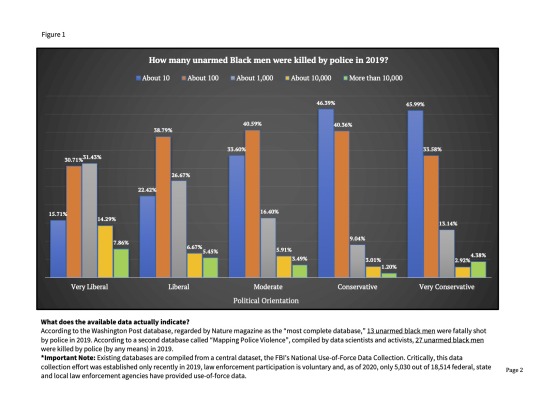
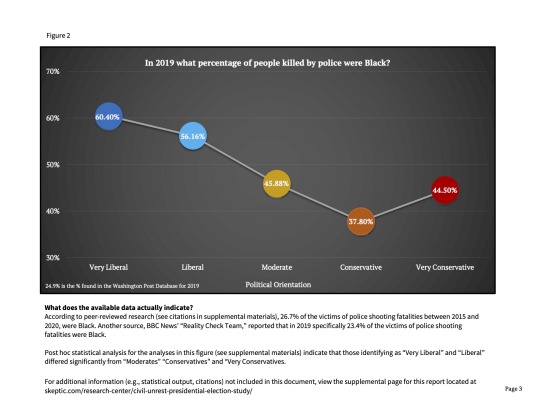
It's worth noting a second element of Skeptic's study which found that respondents with higher trust in news media were far more misinformed about police shootings compared to the reality.
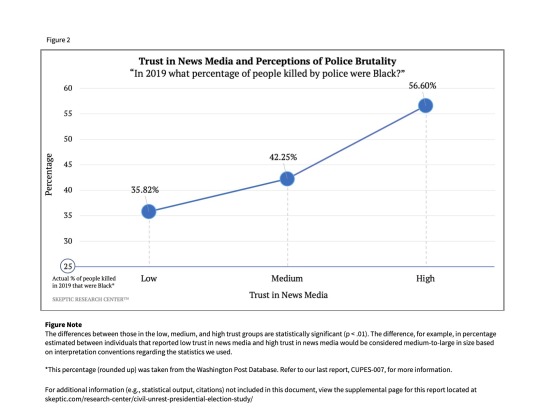
You don't hate legacy media enough. You think you do, but you don't.
If you're comfortable describing tenets of religious faith that violate demonstrable reality as mythology, you should be equally comfortable describing tenets of ideological faith that violate demonstrable reality as mythology.
#Free Black Thought#Michael Huemer#Progressive Myths#mythology#police shooting#religion is a mental illness
6 notes
·
View notes
Text
The Ripple Effect of Dissent: How One Voice Can Ignite Change
Throughout history, dissent has been a powerful tool for societal transformation. From the civil rights movements to environmental activism, the courage of individuals to speak up against injustice has often set the stage for monumental change. A single voice—be it a lone protestor, an outspoken leader, or a determined activist—has the potential to inspire collective action and challenge entrenched systems. This article delves into the ripple effect of dissent and how one person’s resolve can ignite a movement that reshapes society.
The Legacy of Individual Protest
The idea that one person can ignite a movement has been introduced previously. History is filled with examples of individuals who stood up, seemingly alone at first, and sparked massive social change. Take, for example, the story of Rosa Parks, whose refusal to give up her seat on a segregated bus in 1955 triggered the Montgomery Bus Boycott. Her courageous action became a pivotal moment in the American civil rights movement, proving that a single act of defiance can resonate far beyond its initial impact.
Similarly, in 1989, a lone protester stood in front of a column of tanks in Tiananmen Square, China, during a pro-democracy protest. The image of the "Tank Man" has since become a symbol of resistance against oppression. While his identity remains unknown, his stance against the military became a beacon of hope and courage, inspiring people around the world to resist authoritarianism.
How Dissent Grows Into Movements
While one person can spark change, movements are what carry dissent forward and turn individual resistance into collective action. Social movements grow by mobilizing support, engaging in strategic action, and building coalitions across different groups.
Consider the rise of the Black Lives Matter (BLM) movement, which began in response to the acquittal of Trayvon Martin’s killer in 2013. The hashtag #BlackLivesMatter was first used on social media by three women—Alicia Garza, Patrisse Cullors, and Opal Tometi—who were determined to highlight systemic racism and police brutality in the United States. What started as an online call for justice soon expanded into protests, policy demands, and global solidarity, turning individual voices of anger and grief into a sustained movement for racial equality.
Social Media as a Modern Platform for Dissent
The digital age has dramatically transformed how protests are organized, and voices are amplified. Social media platforms such as Twitter, Instagram, and Facebook have made it easier for individuals to share their dissent, organize protests, and build global communities around a common cause. One tweet or post can go viral, turning a personal statement into a worldwide conversation. Social media provides a platform for marginalized voices to be heard, making it possible for even the most minor protests to reach a massive audience. It allows individuals to bypass traditional media channels, build momentum for their causes, and connect with like-minded people from around the world.
Overcoming the Fear of Speaking Out
For many, the idea of standing up alone against a perceived injustice can be daunting. Fear of backlash, isolation, or failure often prevents people from voicing their dissent. Yet history shows that even the smallest act of defiance can make a lasting impact.
Consider the story of Malala Yousafzai, a young Pakistani girl who publicly advocated for girls’ education in a region where the Taliban had banned it. Despite the dangers, she spoke out through blogs, interviews, and speeches. In 2012, she was shot in an assassination attempt, but Malala survived and continued her activism. Her bravery not only sparked global attention but also inspired others to take action for women’s rights, eventually earning her the Nobel Peace Prize.
Collective Power: When Individual Voices Unite
The power of one voice is magnified when it becomes part of a collective. Movements gain momentum as they grow, with individuals coming together to amplify their message, strategize, and apply pressure on those in power. In many cases, the larger the collective, the harder it is for leaders, governments, or institutions to ignore the demands of the people.
The Women’s March in 2017, which took place the day after Donald Trump’s inauguration, is a perfect example of this. What began as a grassroots response to the political climate in the United States turned into a worldwide protest. Millions of people from different backgrounds, races, and genders united to demand equality, justice, and human rights. The march sent a powerful message to political leaders about the strength of collective dissent and the importance of standing up for marginalized communities.
The Future of Protest and Individual Action
As we look to the future, protests and movements will continue to play a crucial role in shaping the world. With new global challenges—ranging from climate change to economic inequality—the need for dissent and activism is more urgent than ever. And as technology continues to evolve, individuals will find new ways to raise their voices, organize, and demand change.
Dissent, whether in the form of protests, social media activism, or everyday acts of defiance, has the power to ignite change. While movements often rely on the collective strength of many, they frequently begin with a single voice—someone brave enough to stand against injustice and demand better. As we continue to face pressing global challenges, the ripple effect of one voice can lead to movements that change the world.
0 notes
Text
Multimedia Blog #3 (Social Media)
The social media site I decided to go with is Facebook. On Facebook I follow this page called Black Lives Matter. I decided to talk about this page because the goal of the page is to build connections between Black people and allies to fight anti-Black racism, spark dialogue amongst Black people and facilitate the types of connections necessary to encourage social action and engagement. This page was created July 17th, 2013. This page is not to attack anyone, but it is to create genuine bonds and healthy dialogues with one another. Black Lives Matter is an Organization that was founded by Patrisse Cullors, Opal Tometi and Alicia Garza. They also have their own website and Instagram as well.

The Three women who are the founders of Black Lives Matters LLC
This page can align with our course readings when speaking on racism, white supremacy, stereotypes, injustice and many more. In the course we have went over numerous readings discussing the injustice and racism that the world shows everyday. In the book "A different Mirror" by Ronald Takaki talked about the Great Migration of African-Americans. The Great Migration was for Blacks to escape racial violence, better jobs and wages. The page Black Lives Matter speaks on the racial violence that is still being shown in today's world. I call today's racial issues "Modern day racism". The brutality that Black people endured back in the day is still going on till this day. The way Blacks and/or African-Americans are viewed by White people still remains the same today.


Another align I would say is the Glenn Ligon's self portrait "Exaggerating my Black features/White features." I say this because in this portrait Glenn drew a connection to the audience to see if there was a difference in either portrait. Both portraits remained the same. Seeing the portrait I got the concept of outside of skin tone, what is the difference between Blacks and Whites? Are we not all human? The BLM page is used to shine the light on the harsh topics that we face daily as African-Americans and/or Blacks. Help all races stand together as one instead of against one another.
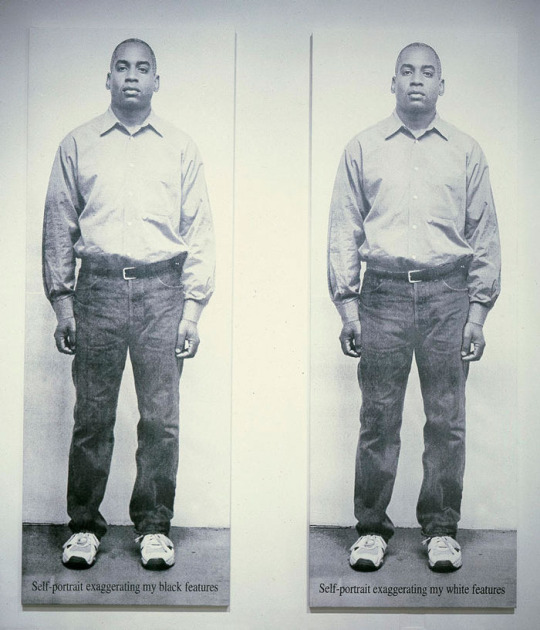
youtube
Citations
• Black Lives Matter. (2023). Black Lives Matter. Black Lives Matter. https://blacklivesmatter.com/ • Takaki, R. (2008). A different mirror: A history of multicultural America (1st new ed.)
• Ligon, G. (1997). Self-Portrait Exaggerating my Black Features/Self-Portrait Exaggerating my White Features. photograph.
• Black Lives Matter. (2023, July 10). It’s Still Defund the Police. YouTube. https://m.youtube.com/watch?v=MZ-U0jfpLUc
youtube
0 notes
Text
Week 6: What is Digital Citizenship? Hashtag Publics, Political Engagement and Activism
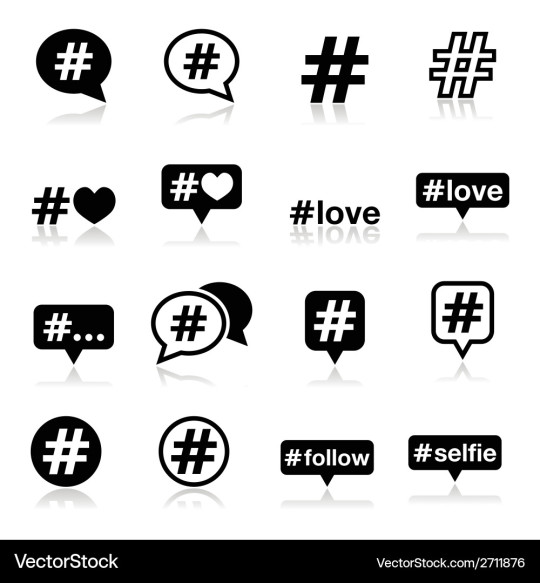
Welcome back to my blog! ☀️
This week's content is gonna be a little bit serious as we're going to talk about the world of digital citizenship, focusing on how hashtags bring people together for political engagement and activism. I'll break it down so it's easy to understand and fun to read. So, what exactly is digital citizenship? Basically is having the know-how to use digital tools to connect with others, share ideas, and be active in our online communities. It's all about being a positive part of the digital world. (Media smarts, 2022)
I guess all of us are very familiar with hashtags (#), even I also love using hashtags when posting stuff on social media. For me, hashtag publics are like online groups that come together around specific hashtags. When people use the same hashtag, they join a bigger conversation. I’ve seen two famous hashtags #BlackLivesMatter and #MeToo have created huge online movements (the impact is legit crazy). (Bestvater et al., 2023) These hashtags bring together people with similar concerns, letting them share stories and raise awareness. It's pretty cool how a simple hashtag can connect voices from all over the world, showing us how serious these issues are and that they're happening everywhere, we can't just ignore or brush them off.

I deep down really think that hashtag publics are really powerful because they make it easy for people to get involved in political engagement. Political engagement involves activities like voting, campaigning, or sharing information to influence government and public policies. Social media has made this incredibly accessible. I remember seeing #BlackLivesMatter was everywhere, and all of my social media platforms were flooded by this hashtag, that's why I did some research because I was too curious about how is this hashtag became so famous.
#BlackLivesMatter started in 2013 after Trayvon Martin's killer was acquitted. Alicia Garza, Patrisse Cullors, and Opal Tometi created it to fight racism and violence against Black people. It became a worldwide movement where millions used the hashtag to share their stories and call for justice. (Adams, 2020)
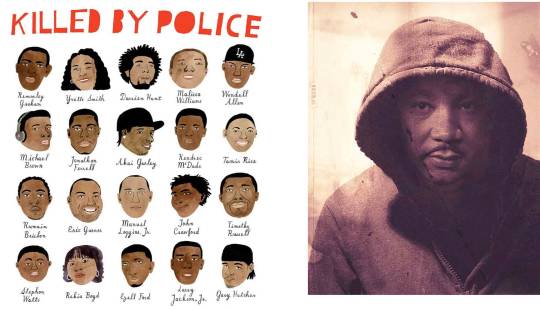
Another hashtag #MeToo is also frequently being used and mentioned. I know one of the cases in China, there's a big #MeToo moment occurred involving a former intern, Xianzi, accusing a famous TV anchor, Zhu Jun, of sexual assault. Xianzi's accusation sparked a wave of support online, with many women sharing their own stories of harassment in the entertainment industry using #MeToo. This moment highlighted the power of such movements to create a sense of community and empower people to fight for what's right. (Nast, 2018)
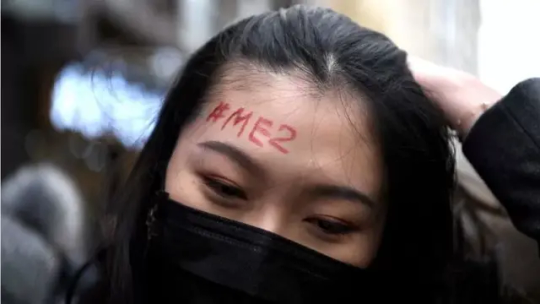
Hashtags aren't just for raising awareness—they're also a big part of activism. Activists use them to get organized and keep the ball rolling. Like during climate strikes, hashtags such as #FridaysForFuture help folks rally worldwide. Students from all over use these tags to swap stories and get others fired up to join in. It's wild how a little tag can turn into a big force for making things happen.
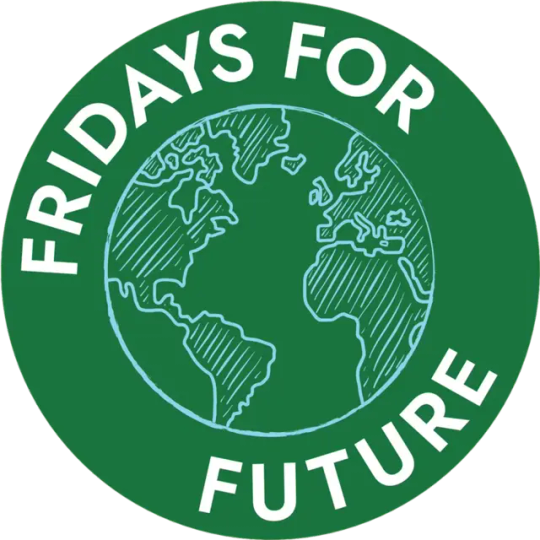
In short, being a good digital citizen means using hashtags wisely, talking about politics, and getting involved in activism. That's how we can make the internet better and make real change happen. So, if you see a hashtag that speaks to you, jump in and add your voice to the conversation.
References :
Adams, C. 2020. A movement, a slogan, a rallying cry: How Black Lives Matter changed America’s view on race. NBC News. https://www.nbcnews.com/news/nbcblk/movement-slogan-rallying-cry-how-black-lives-matter-changed-america-n1252434.
Bestvater, S., Gelles-Watnick, R., Odabaş, M., Anderson, M. and Smith, A. 2023. #BlackLivesMatter Turns 10. [online] Pew Research Center: Internet, Science & Tech. https://www.pewresearch.org/internet/2023/06/29/blacklivesmatter-turns-10/.
Media smarts, 2022. What is Digital Citizenship? [online] MediaSmarts. https://mediasmarts.ca/digital-media-literacy/general-information/digital-media-literacy-fundamentals/what-digital-citizenship.
Nast, C. 2018. One Year of #MeToo: How the Movement Eludes Government Surveillance in China. [online] The New Yorker. https://www.newyorker.com/news/news-desk/one-year-of-metoo-how-the-movement-eludes-government-surveillance-in-china.
0 notes
Text
Week 5: Digital Citizenship
Definition
"Those who use the internet regularly and effectively" are considered digital citizens. According to this definition, a digital citizen is someone who uses information technology (IT) to participate in politics, society, and the government (Mossberger, 2007). More contemporary definitions of the term emphasize the democratizing and empowering aspects of the citizenship idea, characterizing digital citizenship as the self-enactment of an individual's role in society via the use of digital technology.
Platformization
Platformization is the reorganization of cultural practices and ideas around digital platforms, as well as the penetration of these platforms' infrastructures, economic processes, and governmental frameworks into many economic sectors and spheres of existence (Poell, 2019). When it comes to media, the term "platformization" describes the growing significance and impact of digital platforms, such social media platforms, in the creation, sharing, and consumption of news and other media material.
Hasgtag public and activism
Hashtag activism refers to the use of Twitter hashtags for Internet activism. Using hashtags helps categorize and coordinate online communities, making it easy for people with similar interests to connect when searching with keyword phrases starting with the # symbol. On social media, people may use hashtags to post thoughts and facts on social issues in a way that invites followers to engage and contribute to a wider discussion that could lead to change.
One of the notable hashtags that has received great attention in recent years is #BlackLivesMatter. The Black Lives Matter movement demands an end to African American deaths and police violence in the United States. Alicia Garza, Patrisse Cullors, and Opal Tometi created the hashtag #BlackLivesMatter in reaction to George Zimmerman's trial and subsequent acquittal, in which he shot and murdered 17-year-old Trayvon Martin (Guobin, 2016). The power of hashtags is great because it shows the unanimity of the online community to attract attention and have a strong psychological impact on one or more specific audiences.

References
Mossberger, K., Tolbert, C. J., & Mcneal, R. S. (2007). Digital Citizenship: The Internet, Society, and Participation. In Google Books. MIT Press. https://books.google.com.vn/books?hl=en&lr=&id=Lr5NEAAAQBAJ&oi=fnd&pg=PR9&dq=citizen+ship:+internet
Poell, T., Nieborg, D., & van Dijck, J. (2019). Platformisation. Internet Policy Review, 8(4), 1–13. https://doi.org/10.14763/2019.4.1425
Yang, G. (2016). Narrative agency in hashtag activism: The case of #BlackLivesMatter. Media and Communication, 4(4), 13–17. https://doi.org/10.17645/mac.v4i4.692
0 notes
Text
Is Social Media a Great Tool for Activists?
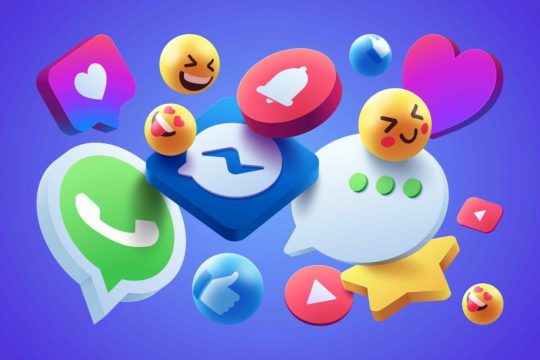
Social media, as we all know, has been around for decades. From sharing posts to communicating with our friends and family, there is no doubt that social media has made our lives ten times better. Whether it is seeing celebrities posting their thoughts and opinions on social media platforms, famous and upcoming brands advertising their product or normal folks like you and I, joining in on the conversation and giving our two cents, social media is like the best invention to ever grace our presence. But one could wonder whether it is a great tool in being an instrument for the voiceless.
We know that social media is a powerful tool, it can be used for both good and bad things. Good, meaning — posting harmless content, sharing funny pictures/videos/experiences and among others. As for bad — propaganda, cyberbullying, doxing and among other online acts that harms people on the internet. But for activism, social media plays a huge role in it. Not only does social media aids in amplifying voices for the movement but it also helps to educate and spread awareness to the public, both local and international. In fact, this is where the term ‘social media activism’ came about. That very term works to advance the aims of social or political groups via the use of online platforms (Khiry, 2020).
Moreover, digital technology allows activists to use hashtags to further their movement online. By using the tag, it helps with the algorithm and gives more exposure to online users. Aside from Facebook and Instagram, the hashtag is most used on the X app. For instance, Black Lives Matter is an activist movement committed to fighting against police brutality and racial violence in the black community in the USA. The BLM was founded as an online movement using the hashtag #BlackLivesMatter, created by three of the organization's founders — Patrisse Cullors, Alicia Garza, and Opal Tometi. The hashtag became one of the popular trending topics on a few social media platforms like X, Facebook, Instagram and TikTok. As more and more innocent African Americans were killed by the police and had to endure years upon years of racial harassment, those three words became a catalyst for protestors to spread the movement.

Image 1. Black Lives Matter London Protest on June 6th, 2020.
Despite how social media seems to be an ideal instrument to use for spreading awareness for activists, what emerges from this is the performative activism. This selfless act is when users, fabricating as allies, post about the movement without the sheer intent to make a change. Instead, it is for their own personal gain and to garner attention towards themselves. Generally, these types of people are those who post about the movement, but their actions say otherwise. This hypocritical performance is typically done by big-named celebrities and brands to save face and avoid backlash and criticism for being neutral or tone-deaf by the public. But there are certain groups of people who chose to stay quiet despite being online and most probably seen what is going on around lately. This goes to show that social media isn’t necessarily a great tool for activists to amplify their cause. People can just scroll past any posts that’s related to any movement and go about their lives, having zero compassion to make a difference, in this already struggling society.
So, to answer the question, is social media a great tool for activists? For me, yes, it is. I believe, in the years to come, soon more social media platforms will be invented and of course, updated to further cater for its users. For one, social media has already been proven to be big part of our daily lives. Imagine where social media was never invented — news around the world wouldn’t even get the coverage it needs. Think about the lesser-known movements that hasn’t even got the attention it deserves, if it weren’t for social media platforms like X and Instagram, we wouldn’t even know about the suffering on a nation especially on minorities, politicians being the devil themselves and so on. Albeit there’s the mainstream media, but that alone cant be trusted wholeheartedly, as we all know, news broadcasting station are known to add in a little bit spice and lies and of course the absurd headlines that mostly work on boomers and gullible people. For that reason, social media is a great tool for activists.
References
Brown, S. (2022). How Activists Use social media for Good — You can too. Retrieved from https://www.cnet.com/news/social-media/features/how-activists-use-social-media-for-good-and-you-can-too/
Eades, J. (2020). Black Lives Matter London Protest. [Photograph]. Retrieved from https://unsplash.com/photos/people-sitting-on-chair-holding-brown-paper-during-daytime-2eWFphvQPbY
Jacquot, S. (2022). Social Media Activism: Accessible or Performative? Retrieved from https://theobserver-qiaa.org/social-media-activism-accessible-or-performative
Khiry, Z. (2020). Why is social media activism important? Retrieved from https://www.onlineoptimism.com/blog/social-media-activism/
Siapera, E. (2012) ‘Socialities and social media’, in Introduction to New Media, pp. 191-208
Su Moe, P. (2020). The Rise of Social Movements through hashtags. Retrieved from https://www.changemag-diinsider.com/blog/the-rise-of-social-movements-through-hashtags
Woods, K. (2022). Social Media Activism: This is how you start a movement. Retrieved from https://sproutsocial.com/insights/social-media-activism/
0 notes
Text
The hashtag #BlackLivesMatter first appears, sparking a movement
Outraged and saddened after the acquittal of George Zimmerman, the Florida man who killed a Black teenager in 2012, Oakland, California resident Alicia Garza posts a message on Facebook on July 13, 2013. Her post contains the phrase "Black lives matter," which soon becomes a rallying cry and a movement throughout the United States and around the world.
Garza said she felt "a deep sense of grief" after Zimmerman was acquitted. She was further saddened to note that many people appeared to blame the victim, Trayvon Martin, and not the "disease" of racism. Patrice Cullors, a Los Angeles community organizer and friend of Garza, read her post and replied with the first instance of #BlackLivesMatter.
As the hashtag became popular on Facebook and Twitter, Garza, Cullors and fellow activist Opal Tometi built a network of community organizers and racial justice activists using the name Black Lives Matter. The phrase and the hashtag were then quickly adopted by grassroots activists and protests all across the country, particularly after the subsequent killings of Michael Brown, Eric Garner and a number of other African Americans at the hands of police officers or would-be vigilantes like Zimmerman.
Simple and clear in its demand for Black dignity, the phrase became one of the major symbols of the protests that erupted after Brown's killing in Ferguson, Missouri in 2014. While polling showed that a majority of Americans disapproved of the Black Lives Matter movement when it first began, in the years following, support for its central arguments grew.
After the May 2020 killing of George Floyd in Minneapolis unleashed a nationwide protest movement against police brutality and racism, support for the Black Lives Matter movement increased by a 28-point margin in two weeks—almost as much as it had in the preceding two years, according to the New York Times.
Perhaps more than any other phrase since “Black Power,” “Black Lives Matter” became a singular rallying cry for the American and global racial justice movements.
1 note
·
View note
Text

May 12th: Research More on BLM Movement
Upon doing my research, I came across some information that I was unaware of. In 2013, three Black organizers: Alicia Garza, Patrisse Cullors, and Opal Tometi created a Black-centered political will and movement building project called #BlackLivesMatter. It was in response to the acquittal of Trayvon Martin’s murderer, George Zimmerman.
I thought that this was so interesting because normally it is a male that starts movements, but this movement came from not only one but three Black women!
0 notes
Text
BLACK LIVES MATTER : thoughts + action items in solidarity
founders of the black lives matter movement: alicia garza, opal tometi, and patrisse cullors-brignac. add to your reading list: “when they call you a terrorist: a black lives matter memoir” by patrisse cullors and ashe bandele. last week, i scrolled through about 50 wellness industry instagram stories to see who was speaking out about black lives matter (blm). i was looking for guidance – how to…

View On WordPress
0 notes
Photo




BLM ✊✊✊
#black lives matter#blm movement#black is beautiful#black is gold#black is divine#pro black#melanin#black people#black power#patrisse cullors#opal tometi#alicia garza
16 notes
·
View notes
Photo


Harry recently followed Opal Tometi, BLM co-founder and civil rights organization, NAACP - 08/06
166 notes
·
View notes
Text
This in from Barb- Exposed: BLM Co-founder Opal Tometi Linked to Communist Venezuelan Dictator Maduro
This in from Barb- Exposed: BLM Co-founder Opal Tometi Linked to Communist Venezuelan Dictator Maduro
Why would take anything she has to say seriously?
View On WordPress
4 notes
·
View notes
Text
Opal Tometi, co-founder of Black Lives Matter: 'I do this because we deserve to live'
15 notes
·
View notes
Photo

Words actually matter. They're significant, they can transform and open up our imagination. ~ Opal Tometi Artist: Kimothy Joy
18 notes
·
View notes
Text
Social Movement Saturday,
Black Lives Matter was founded by Alicia Garza, Patrisse Cullors, and Opal Tometi. All 3 cofounding women of color were inspired by George Zimmerman's aqquital in the murder of Trayvon Martin in 2013. Seeking social justice and civic engagement they created Black Lives Matter in response to Trayvon Martin's murder. Black Lives Matter is commonly abbreviated as (BLM) for short and has several sub-cultures and movements within the Black Lives Matter Movement such as Black Queer Lives Matter, Black Women's Lives Matter, Black Trans Lives Matter, and many others. All of which support and embrace each other while promoting black liberation and discourse with each sub-movement catered towards a specific group of people within the BLM network.
#social movement Saturday#life coach#black lives matter#alicia garza#opal tometi#patrisse cullors#advice blog#self help#mindfulliving#mindfulness#advice column#ethnic studies#gender studies#feminism#American history#trayvon Martin#George Zimmerman#2013#2010's
2 notes
·
View notes
